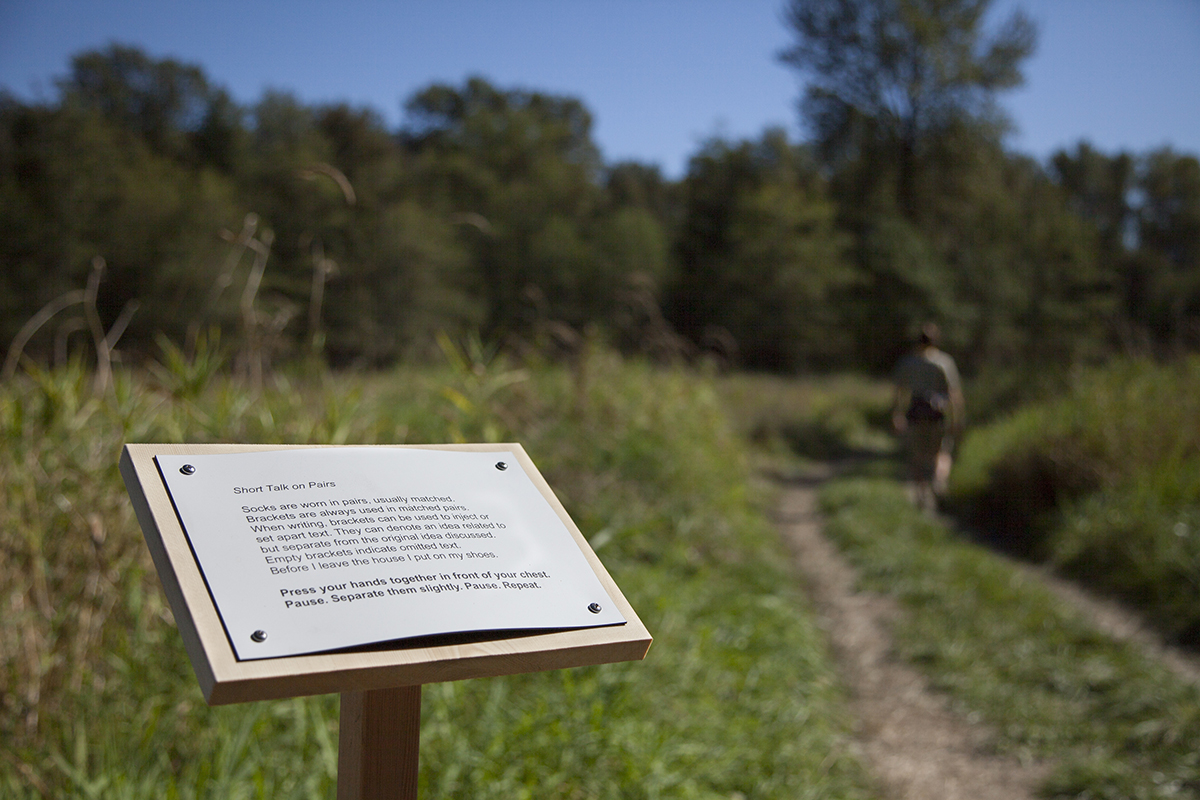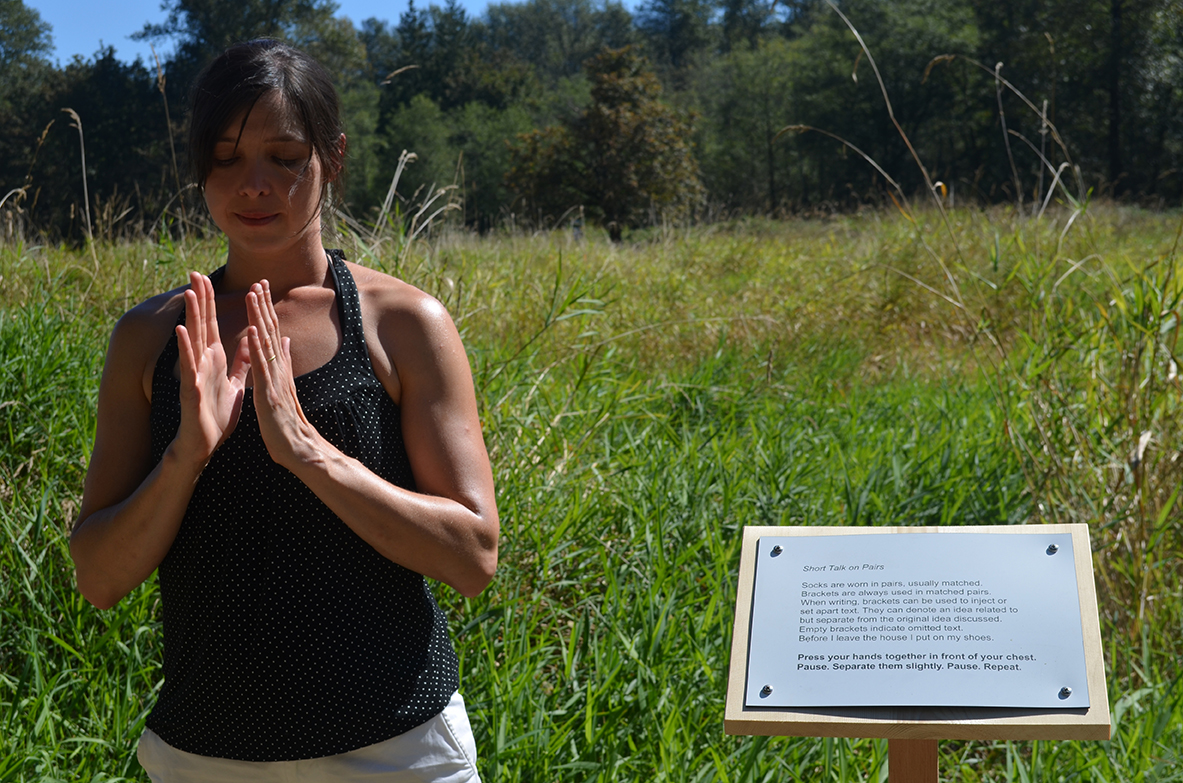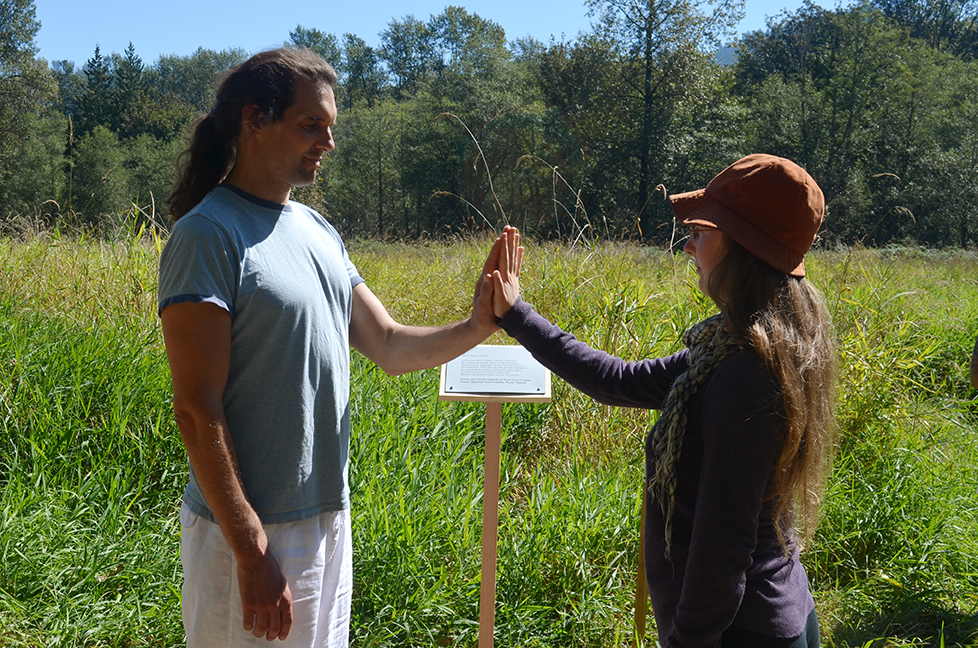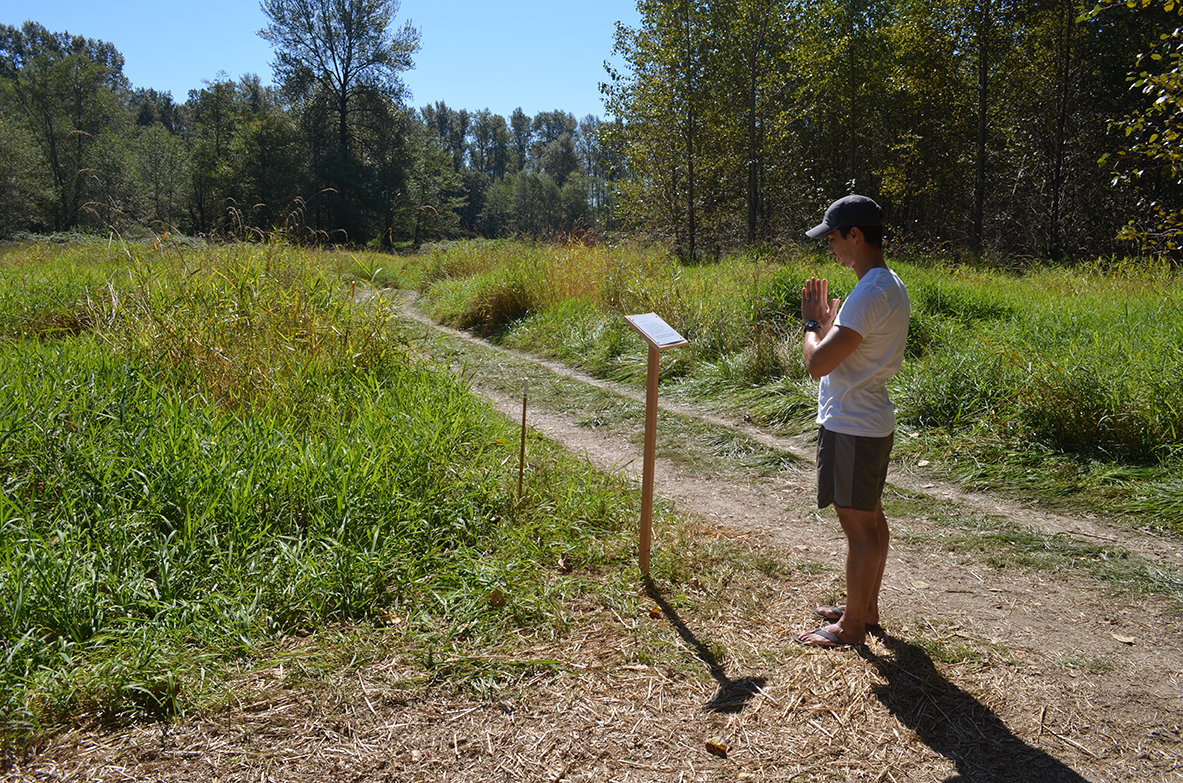In early May, I shared a sketch titled, between. As further response to and exploration of the questions that lead to that work, I composed the following piece employing Anne Carson's 'short talk' poetry form. The work consisted of a plaque, posted on an informational sign post situated at the intersection of two diverging paths. This sign post was one of a series of 10 for a piece titled, Short Talks, Short Walks that was displayed at Smoke Farm for the Lo-Fi Arts Festival // Ad Hoc. An intimate performance corresponded with each post and was enacted during the festival.
Short Talk on Pairs
Socks are worn in pairs, usually matched.
Brackets are always used in matched pairs.
When writing, brackets can be used to inject or
set apart text. They can denote an idea related to
but separate from the original idea discussed.
Empty brackets indicate omitted text.
Before I leave the house I put on my shoes.
Press your hands together in front of your chest.
Pause. Separate them slightly. Pause. Repeat.




